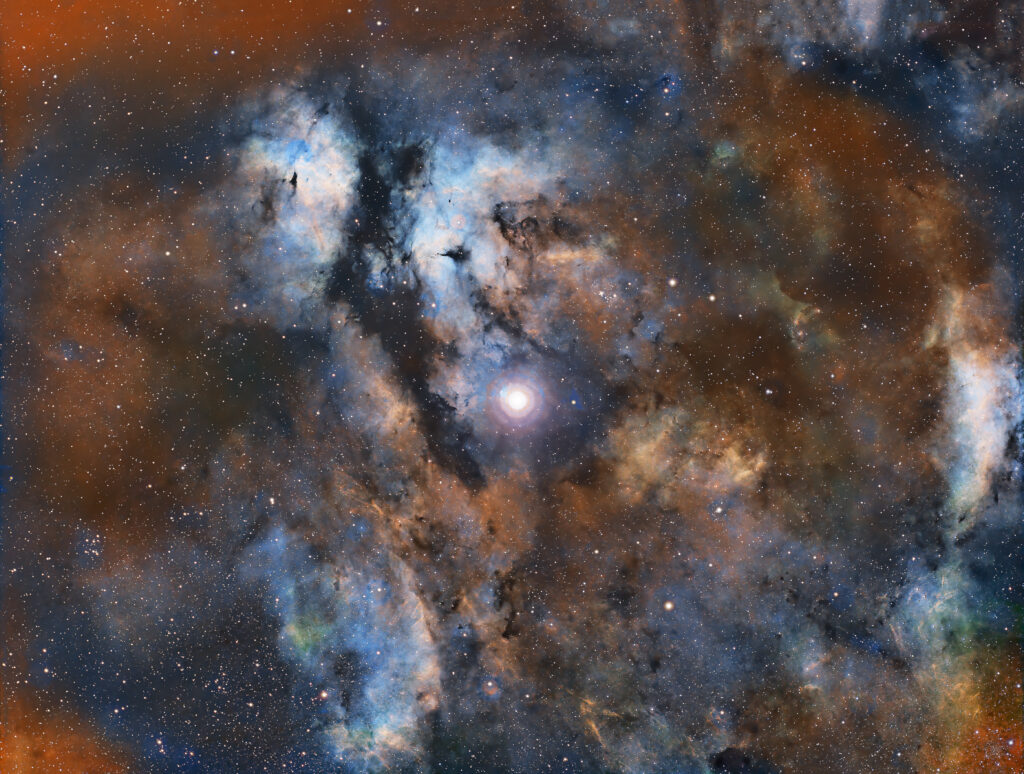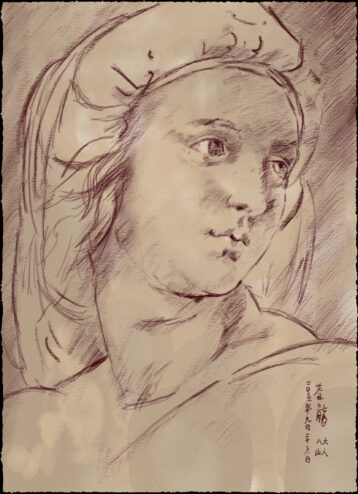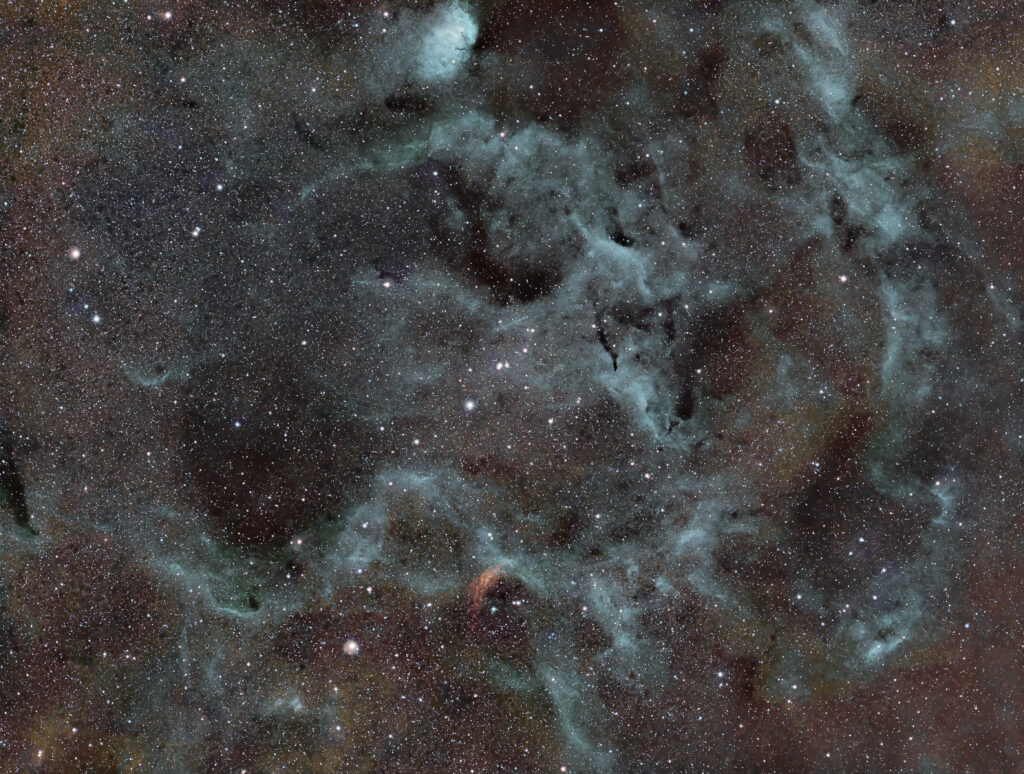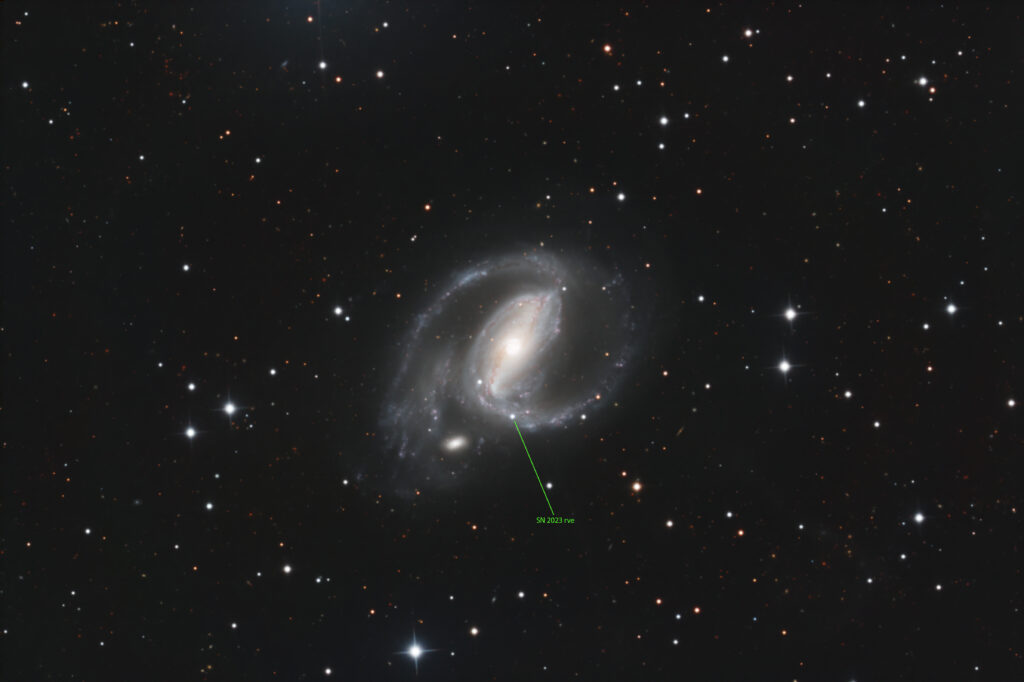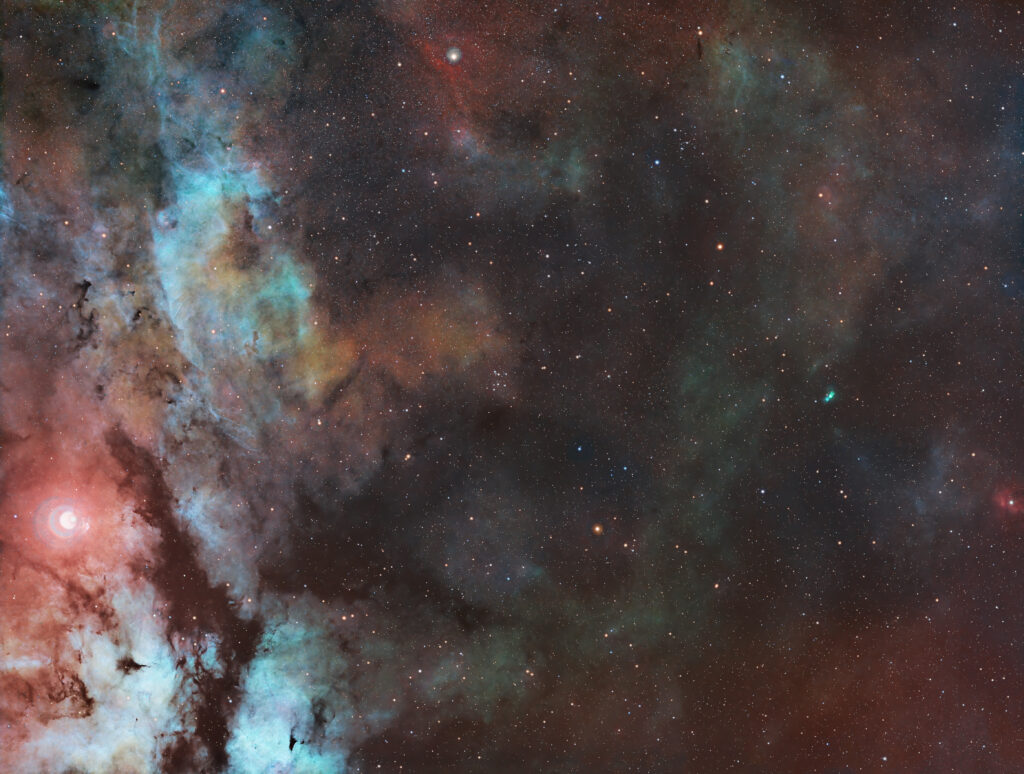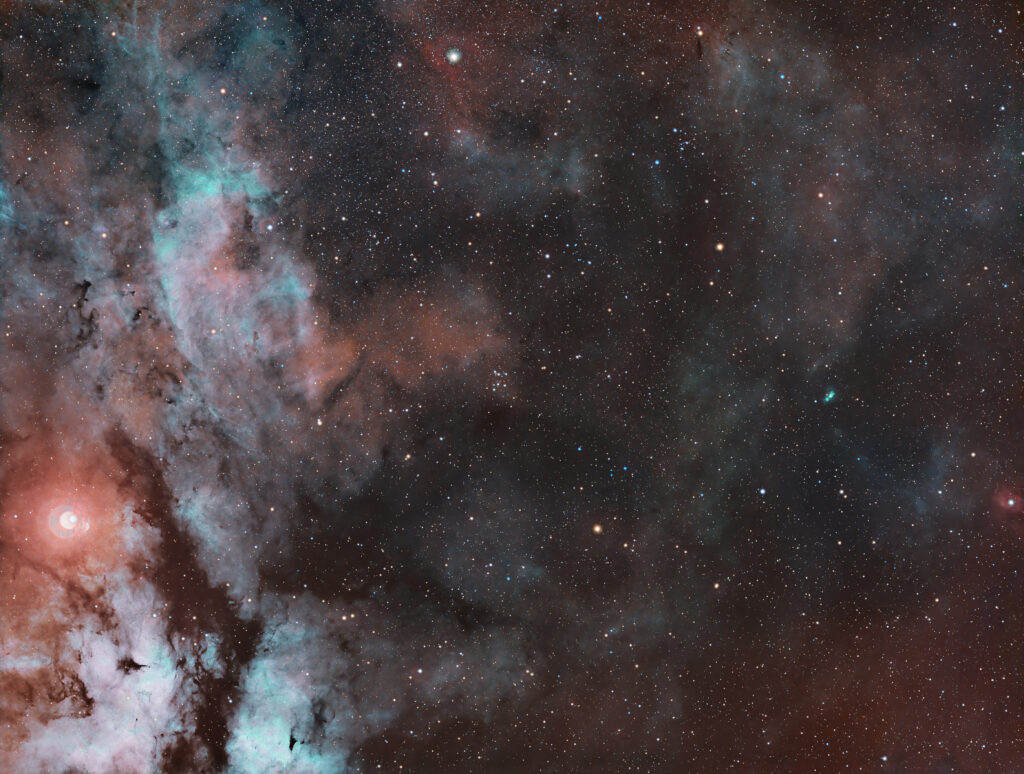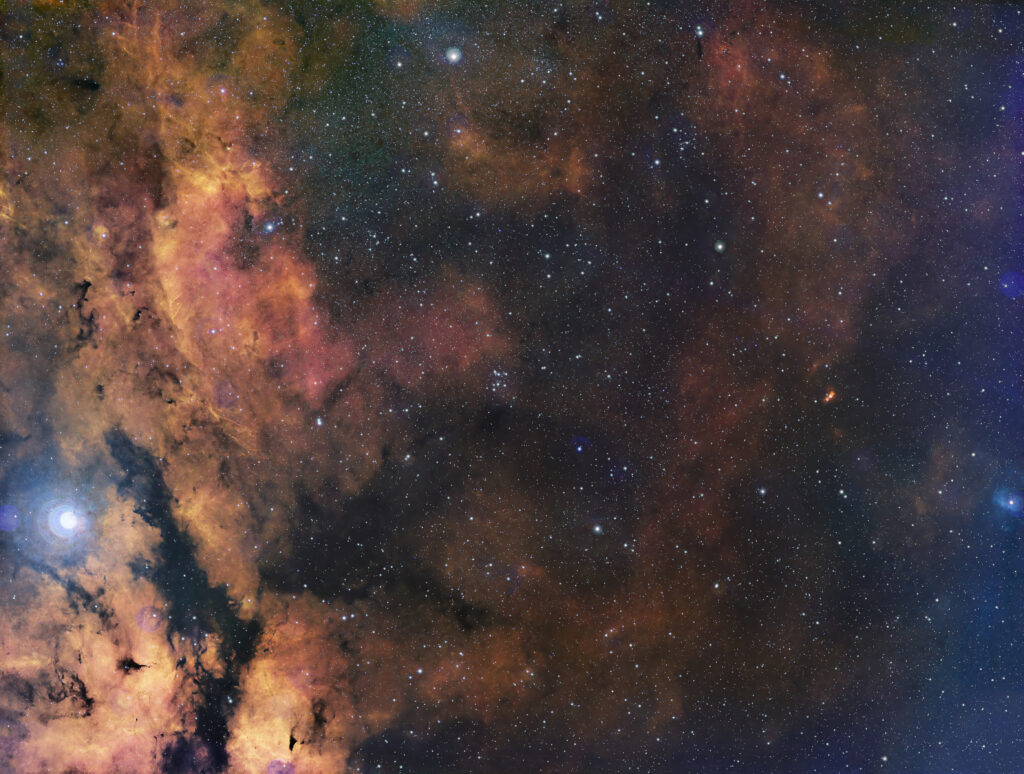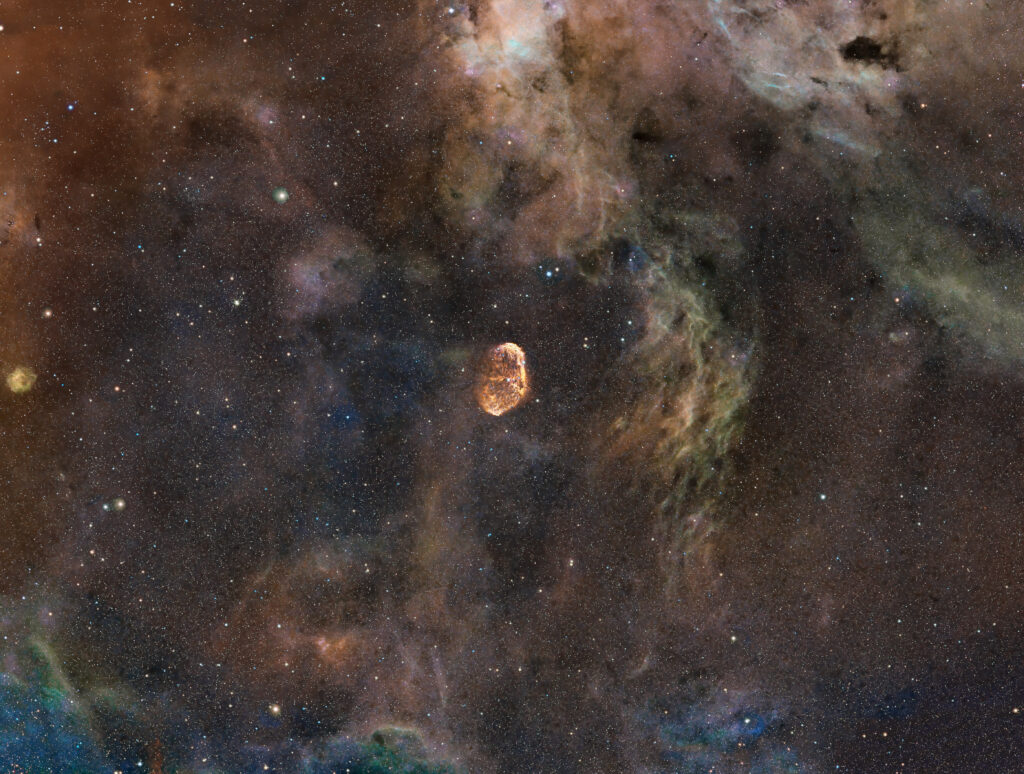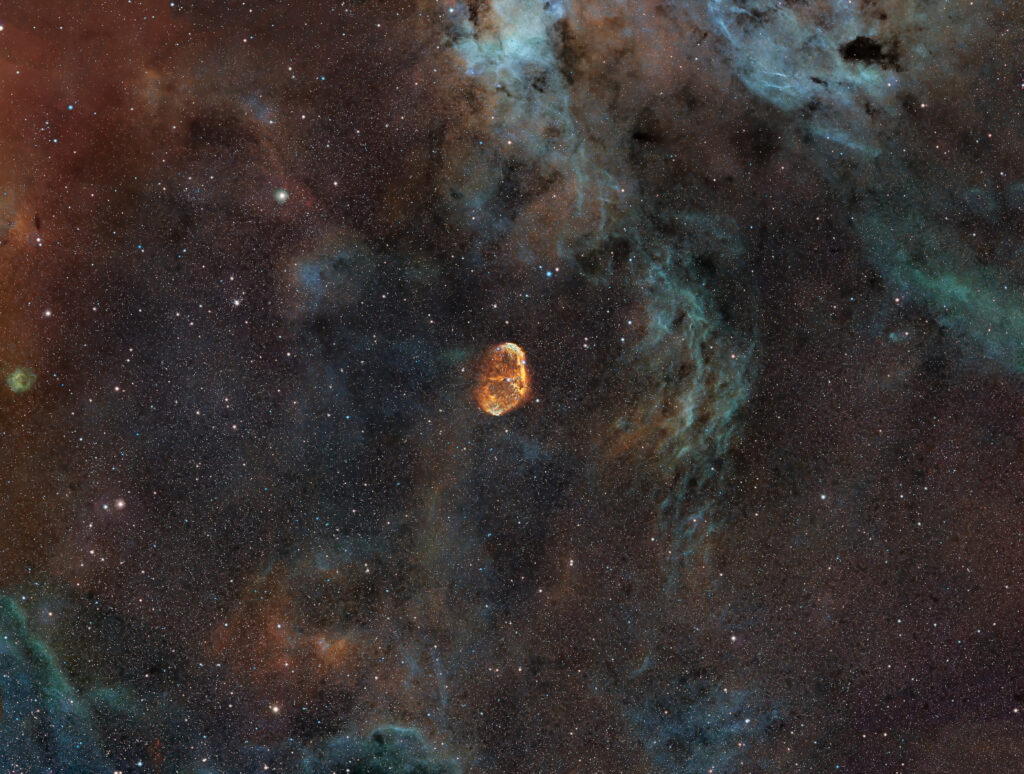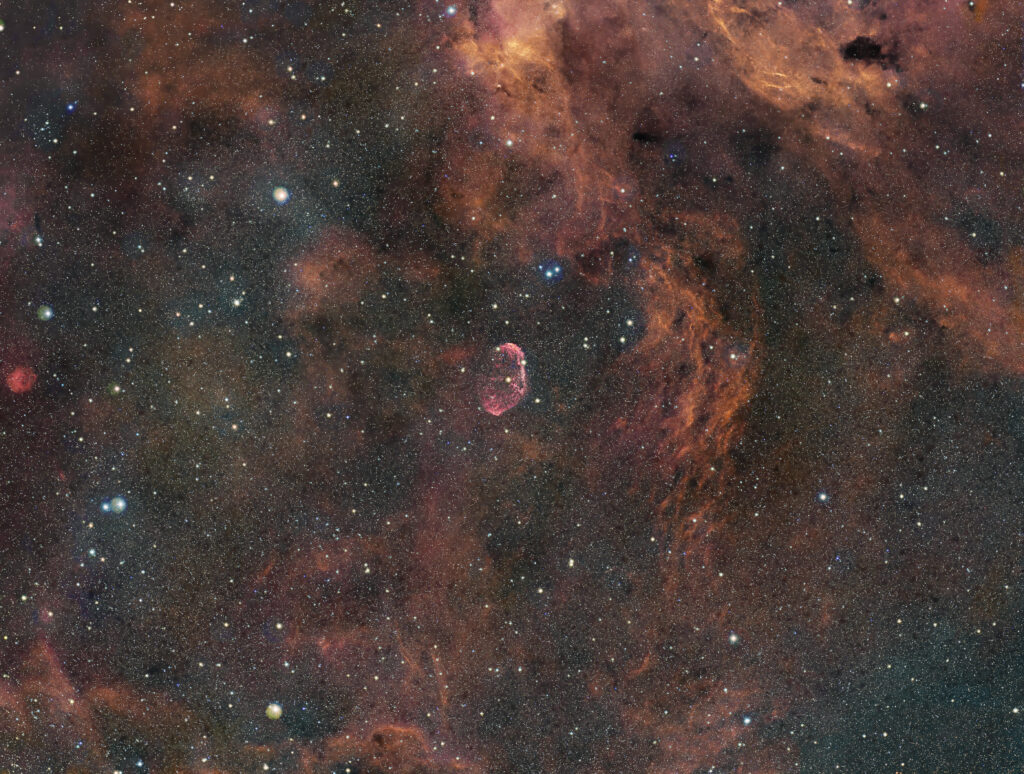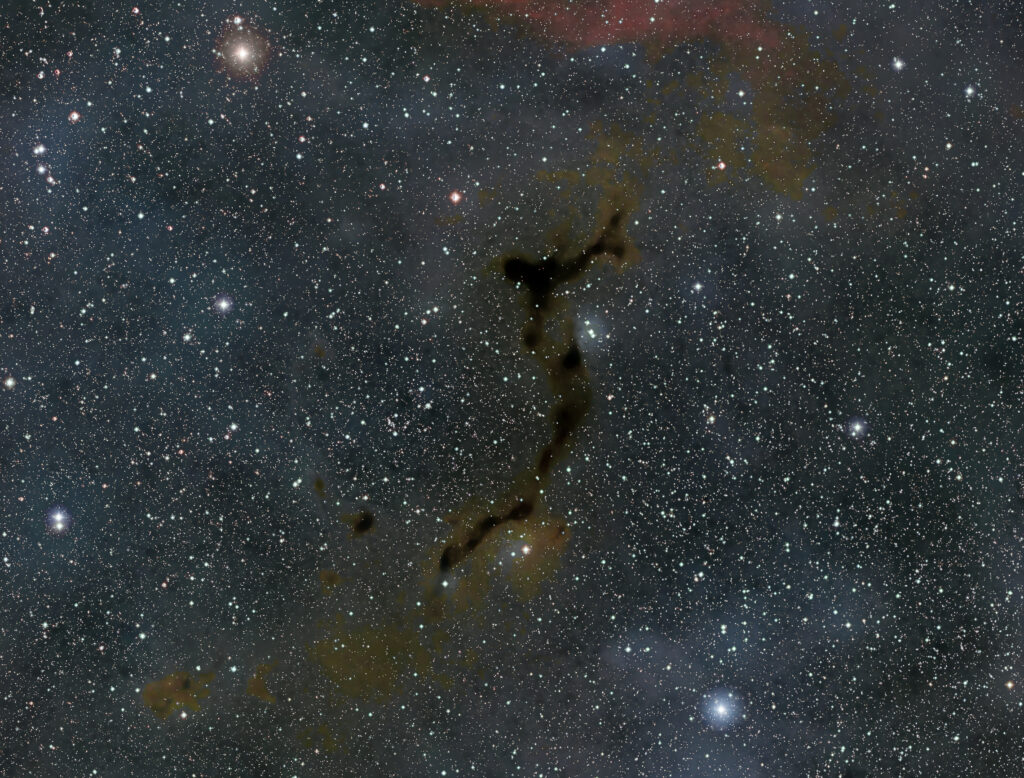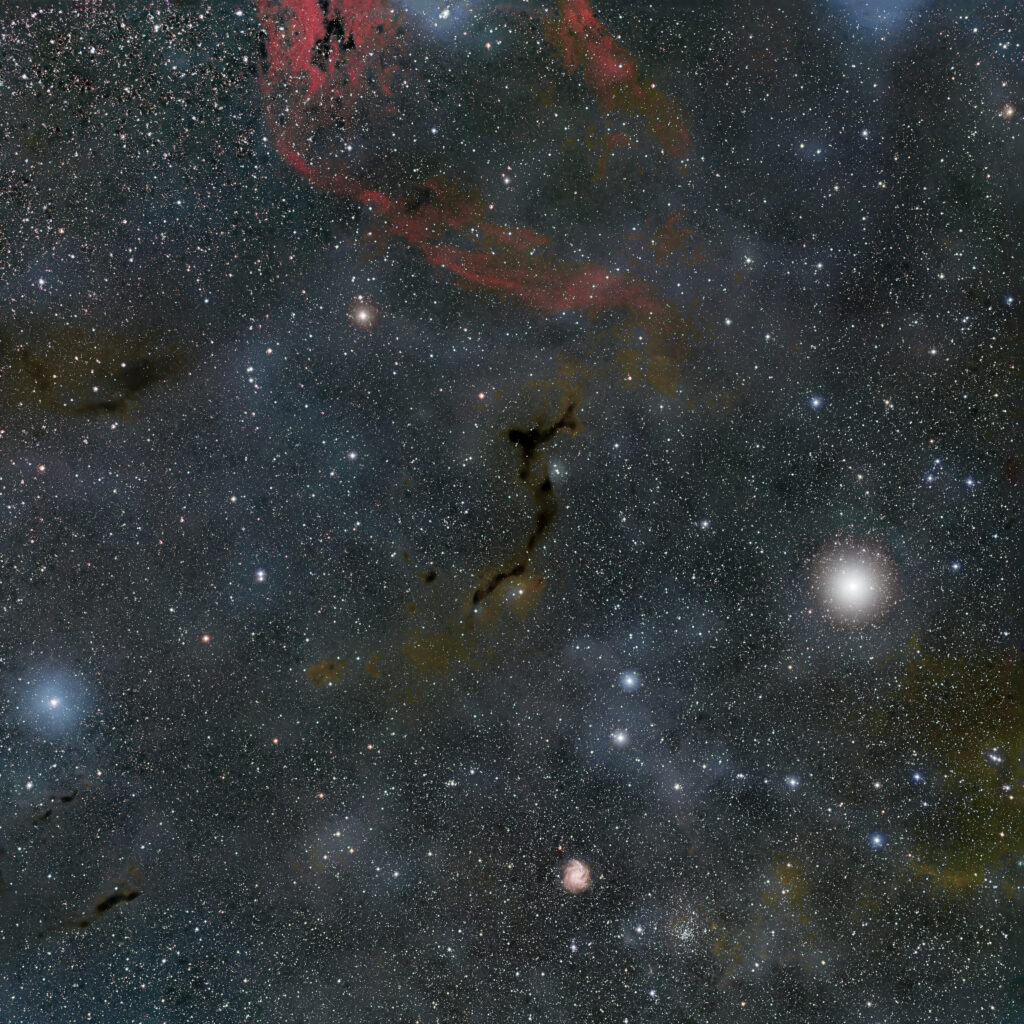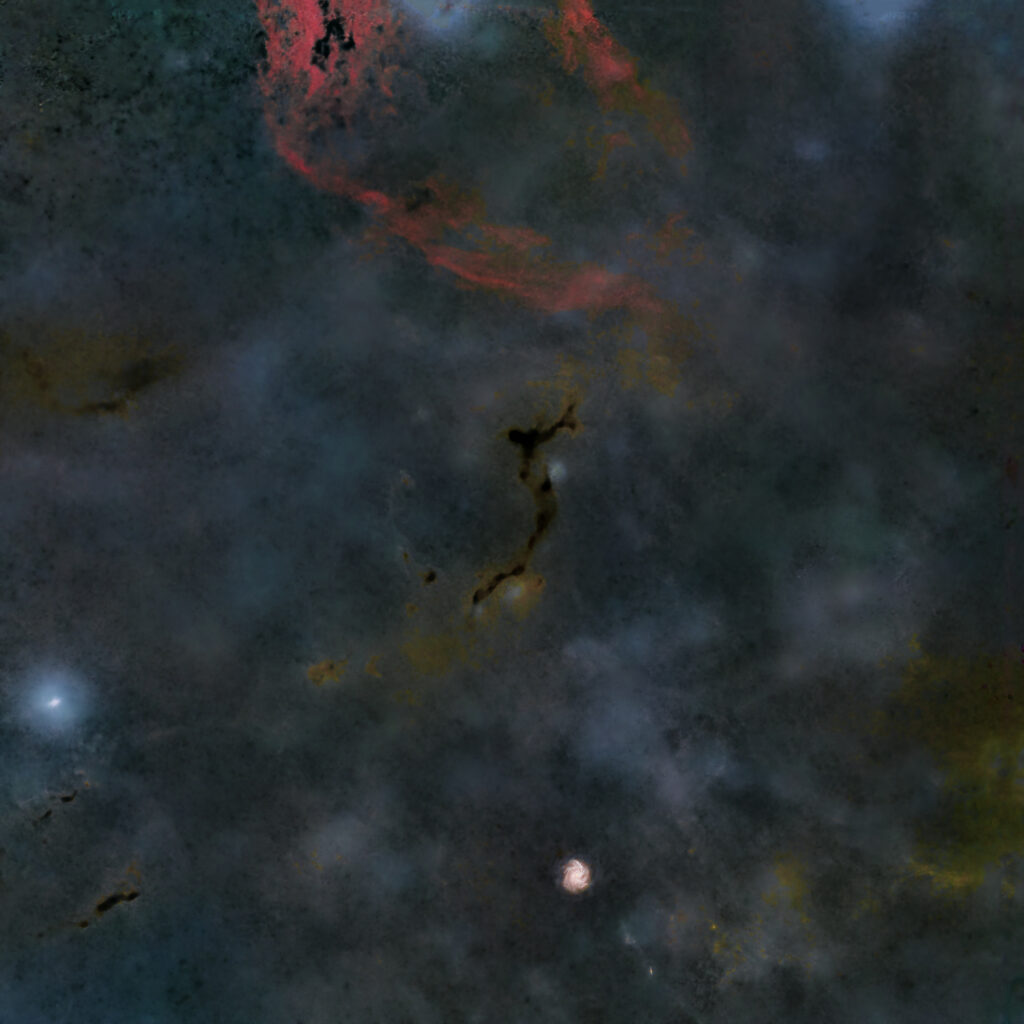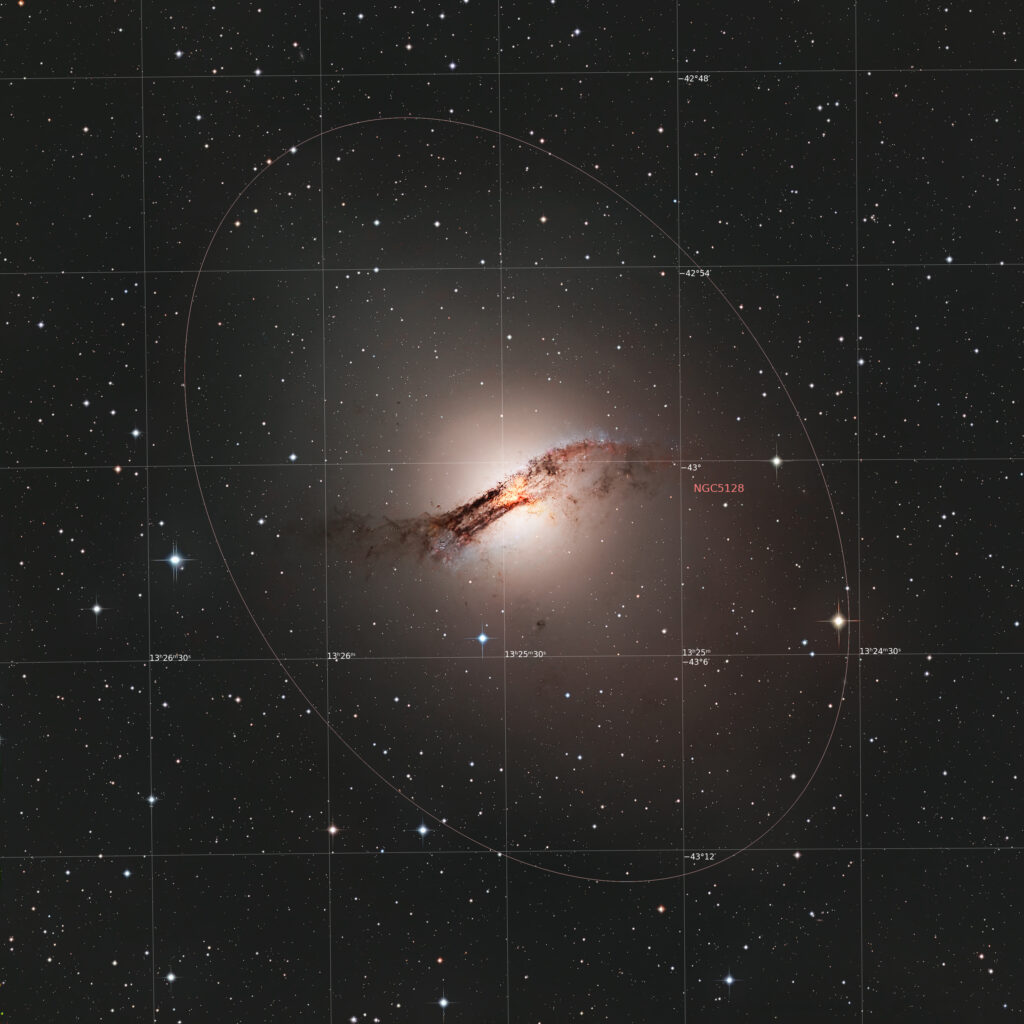4 Ottobre 2023
Astrobin: https://www.astrobin.com/z4lriv/E/
Pose:
Astronomik H-alpha CCD 6nm : 405×180,″(20h 15′) (gain: 173.00) -20°C bin 1×1Astronomik OIII CCD 6nm : 270×180,″(13h 30′) (gain: 173.00) -20°C bin 1×1Astronomik SII CCD 6nm : 316×180,″(15h 48′) (gain: 173.00) -20°C bin 1×1Optolong H-beta 25nm 1.25″ : 180×180,″(9h) (gain: 173.00) -20°C bin 1×1
Integrazione:58h 33′
Giorno lunare medio:13.70 giorni
Fase lunare media:53.65%
Scala del Cielo Scuro Bortle:6.00
Art ,
Asiair Plus ,
AsiAir Pro ,
Astroberry Server ,
Astronomic Ha 1,25" filter ,
Astronomic Oiii 1,25" filter ,
Astronomic Sii 1,25" filter ,
Astrophotography ,
Composizione ,
Cygnus ,
Deep Sky ,
Deepsky ,
Narrowband ,
Optolong Hb 1,25" filter ,
Sadr ,
Sky-Watcher EQM-35 Pro Synscan GOTO ,
William Optics Redcat 51 ,
William Optics v1.5 RedCat 51 APO ,
Xiuart ,
ZWO ASI120mm Mini ,
ZWO ASI1600mm Pro ,
ZWO EFW 8x1,25"
1 Ottobre 2023
Pastel on paper, Rebelle 6 pro by Escapemotions
L’articolo Raffaello: Tersicore sembra essere il primo su XIUART .
28 Settembre 2023
Third panel belonging to mosaic project focused about Cygnus core.
Subframes in narrowband recorded between 05/03/2023 and 08/07/2023, 180sec at -20 Celsius by ASI1600mm Pro at gain 173 on William Optics Redcat 51.
SHO palette
Ha Oiii Hbeta palette
Art ,
Asiair Plus ,
Astroberry Server ,
Astronomic Ha 1,25" filter ,
Astronomic Oiii 1,25" filter ,
Astronomic Sii 1,25" filter ,
Astrophotography ,
Deep Sky ,
Deepsky ,
Narrowband ,
NGC6871 ,
Optolong Hb 1,25" filter ,
QHY 30/130 ,
Sky-Watcher EQM-35 Pro Synscan GOTO ,
William Optics Redcat 51 ,
William Optics v1.5 RedCat 51 APO ,
Xiuart ,
ZWO ASI120mm Mini ,
ZWO ASI1600mm Pro ,
ZWO EFW 8x1,25"
28 Settembre 2023
Comet C/2023 E1 Atlas from Ic Astronomy Observatory, Spain, Takahashi FSQ-106ED (106 mm) F3.6 telescope with CMOS camera QHY600M Pro.
Astrobin: https://www.astrobin.com/ihrzvk/
Art ,
Astrophotography ,
AUS-2 Takahashi FSQ-106ED ,
C/2023 E1 Atlas ,
comet ,
Deep Sky ,
IC Astronomy Observatory, Spain ,
QHY 600M Pro CMOS ,
Remote Astrophotography ,
Takahashi FSQ-106EDX4 ,
Telescopelive ,
Xiuart
28 Settembre 2023
Supernova SN 2023rve in NGC1097, LRGB channels.
Astrobin: https://www.astrobin.com/66lpty/D/
Supernova recorded between 13 and 19 September 2023 by Planewave CDK24 and QHY 600M Pro CMOS camera from El Sauce Observatory, Rio Hurtado Vallei in Chile – Telescopelive network ;
NGC1097 image without SN2023rve recorded by the same Planewave with CCD Proline FLI PL9000 between 23/02/2023 and 25/11/2022.
CCD subframes star-registred to CMOS (with SN2023rve) for right overlay on mouseover activity.
Photoshop layered masters available here:
Art ,
Astrophotography ,
CH-1-CMOS Planewave CDK40 ,
CHI-1 CCD - Planewave CDK24 610/3962 ,
Deep Sky ,
El Sauce Observatory, Chile ,
NGC1097 ,
ProLine PL09000 ,
QHY 600M Pro CMOS ,
Remote Astrophotography ,
Supernova SN2023rve ,
Telescopelive ,
Xiuart
25 Settembre 2023
Preliminary and quick elaboration of Supernova SN2023rve in NGC1097 galaxy, data from Planewave CDK24 and QHY 600M Pro CMOS camera from Telescopelive.
Astrobin: https://www.astrobin.com/x9mdi4/F/
Art ,
Astronomy ,
Astrophotography ,
CH-1-CMOS Planewave CDK40 ,
Deep Sky ,
El Sauce Observatory, Chile ,
NGC1097 ,
QHY 600M Pro CMOS ,
Remote Astrophotography ,
Supernova ,
Supernova SN2023rve ,
Telescopelive ,
Xiuart
19 Settembre 2023
M29 region in narroband, Sii Ha and Oiii+Hb; Hydrogen Beta records I used to integrate Oxigen channel.
Setup is: William Optics Redcat 51 with ASI1600mm Pro, 180 sec. subframes recorded between 02/03/2023 and 31/07/2023; complete framelist available here > https://e.pcloud.link/publink/show?code=XZPA5WZ0i2eg9u3LjkdNdt14IDiRkQBfpVX
This is the second panel of a mosaic project I’m actually postprocessing.
Starless stage made during postprocessing.
Final starry image made in Photoshop; .psd file with layers and adjustements available here > https://e.pcloud.link/publink/show?code=XZBA5WZR0XKpIdXIW08HcdAso5qckue4OV0
SHO integration
Ha Oiii Hbeta integration
Art ,
Asiair Plus ,
Astroberry Server ,
Astronomic Ha 1,25" filter ,
Astronomic Oiii 1,25" filter ,
Astronomic Sii 1,25" filter ,
Astrophotography ,
Deep Sky ,
Deepsky ,
Hubble palette ,
M29 ,
Narrowband ,
Optolong Hb 1,25" filter ,
SHO ,
SHO Palette ,
Sky-Watcher EQM-35 Pro Synscan GOTO ,
William Optics Redcat 51 ,
William Optics v1.5 RedCat 51 APO ,
Xiuart ,
ZWO ASI120mm Mini ,
ZWO ASI1600mm Pro ,
ZWO EFW 8x1,25"
15 Settembre 2023
Crescent Nebula region in Sii Ha and Oiii+Hb; Hydrogen Beta records I used to integrate Oxigen channel.
William Optics Redcat 51 with ASI1600mm Pro, 180 sec. subframes recorded between 02/03/2023 and 27/07/2023; complete framelist available here > https://e.pcloud.link/publink/show?code=XZvzc2ZU1m6s7tNN1QYradzWS1Uqjil9e4X
Starless stage made during postprocessing.
Final starry image made in Photoshop; .psd file with layers and adjustements available here > https://e.pcloud.link/publink/show?code=XZTLc2Z28kmGo8DN5XQmWR6bzf3eHW8rimV
SHO integration, without any Hb contribute.
Ha Oiii and Hb integration, withou any Sii contribute
Art ,
Asiair Plus ,
Astroberry Server ,
Astronomic Ha 1,25" filter ,
Astronomic Oiii 1,25" filter ,
Astronomic Sii 1,25" filter ,
Astronomy ,
Astrophotography ,
C27 ,
Caldwell 27 ,
Crescent Nebula ,
Hbeta ,
Narrowband ,
NGC6888 ,
Optolong Hb 1,25" filter ,
SHO Palette ,
William Optics Redcat 51 ,
Xiuart ,
ZWO ASI120mm Mini ,
ZWO ASI1600mm Pro
13 Settembre 2023
Barnard 150 “Seahorse” nebula in LRGB, from Almeria (Spain) Takahashi FSQ-106EDX4 (106 mm) F3.6 with CCD Proline FLI PL16083; 600″ subframes.
Amazing wider field view includes many DSO objects.
Annotated wider field view shows PGC galaxies and details.
Starless stage of image post production before Photoshop reassebling reveals nebulosity complex details and structures.
After cosmetic correction of calibrated data, I processed subframes within star registration and integrated each channel. LRGB channel combination gave the starting point master. It was processed into dynamic BG removal and after platesolving colors were calibrated by SPCC.
Deconvolution and denoise followed to thus apply color masks for a first enhancement of colors and contrast first to the whole starry file, thus to starless and stars separated flows for better result.
Final composition of image made in Photoshop; original .psd with layers groups and adjustement here available.
Art ,
Astrophotography ,
Barnard 150 ,
Deep Sky ,
Deepsky ,
IC Astronomy Observatory, Spain ,
ProLine FLI PL16083 ,
Remote Astrophotography ,
Seahorse Nebula ,
SPA-3-CCD Takahashi FSQ-106EDX4 ,
Telescopelive ,
Xiuart
6 Settembre 2023
LRGB integration for Centaurus Alpha galaxy, Planewave CDK24 and Proline FLI PL9000, in the Rio Hurtado Valley of Chile, Telescopelive network .
Annotated wider field integration.
Starless stage of cropping focused on galaxy
Art ,
Astrophotography ,
CHI-1 CCD - Planewave CDK24 610/3962 ,
Deep Sky ,
Deepsky ,
El Sauce Observatory, Chile ,
Galaxy ,
ProLine PL09000 ,
Remote Astrophotography ,
Starless ,
Telescopelive ,
Xiuart
